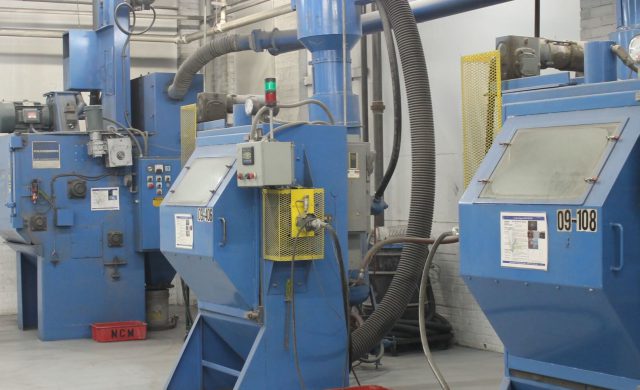What is Dyne testing?
Our last blog detailed the various methods of which to prep a part substrate prior to the application of coating to ensure performance. When the prep method is mechanical, a visual inspection can verify that the prep was done adequately (a blasted surface should exhibit a “frosty” appearance).
However, we are often asked by customers how we verify a clean surface after our chemical prep process. As a quick and easy measurement for part cleanliness and surface tension, DECC utilizes Dyne test inks.
Dyne test inks come in a variety of values. DECC maintains a standard of a 36 Dyne as the value we need to achieve in order to consider a part surface adequate to coat. This value was determined based on development work with two outside cleaning vendors and is actually higher than their standard. We check a part at the beginning, middle, and end of our cleaning process. This ensures that our chemical baths are effective and allows us to make adjustments if necessary.
We have learned that although Dyne marker pens can be used to check cleanliness, it is not recommended. Once a pen is used to check a part that is ultimately dirty, the pen tip can become contaminated and produce inaccurate results. Testing with Dyne Inks and a one-time use cotton applicator swab eliminates the contamination factor you would see with the marker pens and provides a more accurate test result.
To perform the test, the swab is dipped in the target cleanliness Dyne Ink and spread on the part. If the liquid Dyne has a lower surface tension than the part’s surface, the ink will have a consistent, unbroken line. This is an acceptable surface for coating.

If the liquid Dyne has a higher surface tension than the part’s surface, the ink will bead up, not allowing the ink to spread out. In that instance, the surface is deemed unacceptable for coating. At that point, DECC would evaluate our chemical cleaning baths, make appropriate adjustments and run the subject parts back through our process.
Many quality defects can be traced back to a substrate not adequately cleaned. Contact us if you are experiencing defects with your current source and need help figuring out a solution.
Contact Us

